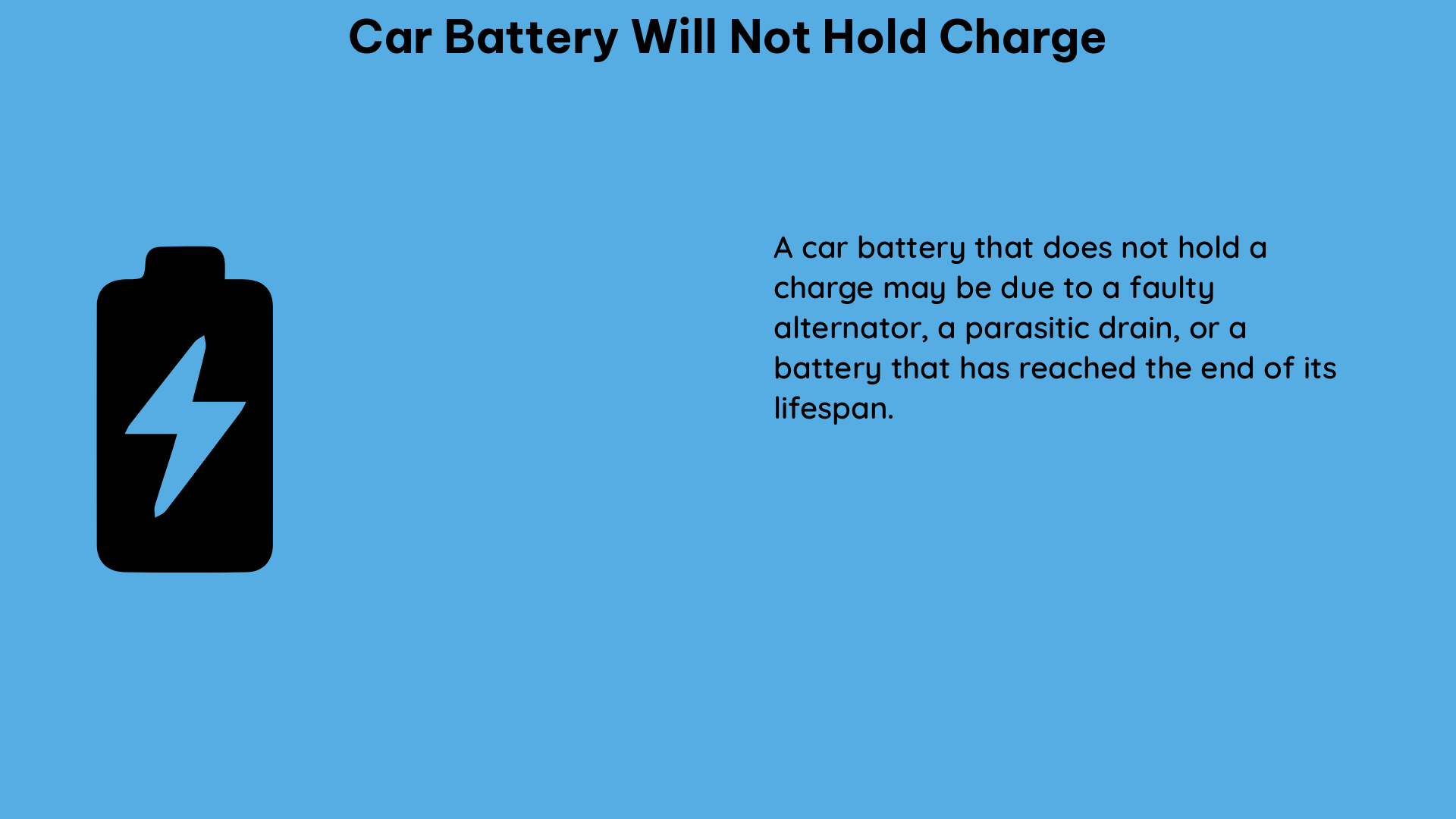A car battery that won’t hold a charge can be a frustrating and potentially dangerous issue, but with the right diagnostic tools and knowledge, you can quickly identify and resolve the problem. In this comprehensive guide, we’ll dive deep into the various factors that can contribute to a battery’s inability to maintain a charge, providing you with a step-by-step approach to accurately diagnose and address the root cause.
Measuring Battery Voltage and State of Charge (SOC)
The first step in diagnosing a car battery that won’t hold a charge is to measure its voltage and state of charge (SOC). A fully charged 12-volt battery should read around 12.6 volts or higher when the engine is off. If the battery is reading significantly lower, it may indicate an issue with the battery’s ability to hold a charge.
To measure the battery’s SOC, you’ll need a voltmeter or a battery tester. A healthy battery should have an SOC of at least 75% after a full charge. If the SOC is significantly lower, it could be a sign of a problem with the battery’s capacity.
Assessing Battery Age and Condition

In addition to voltage and SOC, the battery’s age and physical condition are also crucial factors to consider. Most car batteries have a lifespan of 3 to 5 years, and as they age, their ability to hold a charge can deteriorate.
Look for visible signs of corrosion or cracking on the battery, as these can indicate a problem with the battery’s internal components. Additionally, check the battery terminals for any signs of corrosion, as this can prevent the battery from being properly charged.
Identifying Potential Causes
If the battery is found to be the root cause of the issue, there are several possible reasons why it may not be holding a charge:
-
Corroded Battery Connections: Corrosion on the battery terminals or cable connections can prevent the battery from being fully charged, leading to a quick battery drain.
-
Faulty Alternator: A malfunctioning alternator can fail to provide the necessary voltage to keep the battery charged while the vehicle is running.
-
Electrical System Issues: Problems with the vehicle’s electrical system, such as a short circuit or a parasitic drain, can prevent the battery from being recharged properly.
-
Extreme Temperatures: Extreme hot or cold temperatures can negatively impact a battery’s ability to hold a charge, as they can affect the chemical reactions within the battery.
-
Overcharging: If the battery is being overcharged, it can lead to premature degradation and a reduced ability to hold a charge.
Diagnostic Steps
To diagnose the issue, you can take the following steps:
-
Check Headlight Brightness: Turn on the headlights and observe their brightness. If the lights are dim, it may indicate a problem with the battery’s ability to hold a charge.
-
Use a Voltmeter: Use a voltmeter to measure the battery’s voltage. If the reading is less than 12.56 volts, it may suggest a problem with the battery’s ability to hold a charge.
-
Perform a Load Test: A load test, which involves placing a controlled load on the battery, can help determine the battery’s actual capacity and identify any issues with its ability to hold a charge.
-
Check the Alternator: Use a voltmeter to measure the voltage output of the alternator while the engine is running. If the voltage is not within the recommended range, it may indicate a problem with the alternator.
-
Inspect for Electrical Issues: Check the vehicle’s wiring and electrical components for any signs of shorts, loose connections, or parasitic drains that could be preventing the battery from being properly recharged.
By following these diagnostic steps and considering the various factors that can contribute to a car battery’s inability to hold a charge, you can accurately identify the root cause of the problem and take the necessary steps to resolve it.
Conclusion
A car battery that won’t hold a charge can be a complex issue, but with the right knowledge and tools, you can effectively diagnose and address the problem. By measuring the battery’s voltage and SOC, assessing its age and condition, and identifying potential causes, you can pinpoint the root of the issue and take the necessary steps to restore your car’s battery to full functionality.
Remember, if you’re unsure about any aspect of the diagnosis or repair process, it’s always best to consult a professional mechanic to ensure the safety and reliability of your vehicle.
References:
- Car Battery Won’t Hold a Charge: What Do I Do?
- Car Battery Won’t Hold a Charge
- Can One Estimate How Much Longer a Car Battery Will Last?
- How to Test a Car Battery’s State of Charge
- Troubleshooting a Car Battery That Won’t Hold a Charge

The lambdageeks.com Core SME Team is a group of experienced subject matter experts from diverse scientific and technical fields including Physics, Chemistry, Technology,Electronics & Electrical Engineering, Automotive, Mechanical Engineering. Our team collaborates to create high-quality, well-researched articles on a wide range of science and technology topics for the lambdageeks.com website.
All Our Senior SME are having more than 7 Years of experience in the respective fields . They are either Working Industry Professionals or assocaited With different Universities. Refer Our Authors Page to get to know About our Core SMEs.